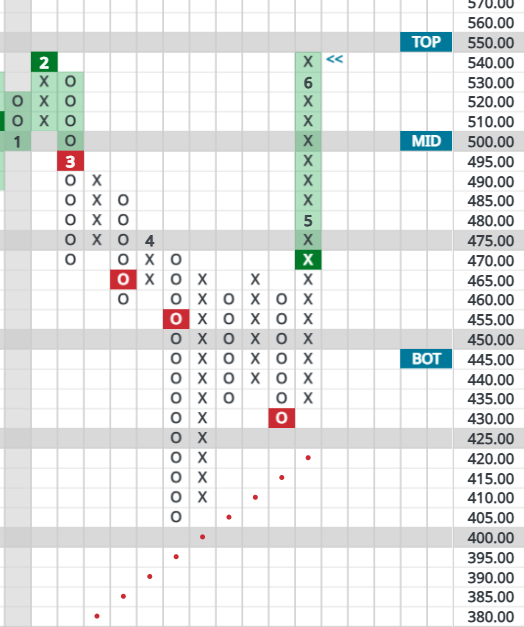Raging inflation, war in Europe and an economy teetering on the brink of recession – what a beautiful time to look for a stock market bottom!
We all know that we should try to buy when there’s “blood in the streets,” but relying on fundamental analysis alone can make the timing of such purchases difficult.
Technical analysis encompasses many different methods of measuring price movement – some useful, some not. Over the course of decades at Granite Wealth Management, we have honed the best ways to measure what matters most… the force that ultimately drives price: supply and demand.
We rely on “Point and Figure” charting – a subset of technical analysis – because it presents the clearest, most reliable pictures of the supply and demand posture of the stock market at any moment in time.
Currently, a number of these pictures suggest the market is washed out and ready to be bought. Let’s focus on one such short-term indicator: the High-Low Index.
The High-Low Index measures the percentage of stocks making new 52-week highs versus those making new 52-week lows. When this figure moves above 70%, it’s an indicator that a rally may be getting long in the tooth, although lasting bull markets can leave this indicator in elevated territory for quite some time. Lows in this indicator, however, tend to be fleeting, while readings below 30% suggest it’s time to start building a shopping list.
Occasionally, the High-Low will fall to extremely washed-out levels near and below 10%. Such moments in time tend to be brief, reliable and rare. Here are a few historical examples:
March 2009 – The Generational Buying Opportunity
The High-Low Index declines to a 10, and then reverses direction upwards to the 60 – 80 range, where it remains for the most part of a decade, aside from a few downdrafts. This period saw the S&P 500 rise 343%.
December 2018 – The Violent Christmas Eve Sell-Off
The High-Low plummets to a reading of 2, changes direction just a month later and zooms to a level of 86 by late February. Subsequently, 2019 saw the S&P 500 grow 29%.
March of 2020 – The COVID Sell-Off
The Index makes another rapid decline to 2 in late March, reverses upwards in April, and then spends the next 18 months in the 80-90 range. During this time, the S&P 500 was up just over 40%.
Where does the High-Low Index stand today? 11.7%, which comes after a bottom-reading of 4, and a subsequent reversal with positive traction. A reversal is a confirmation signal that a favorable market environment is forming.
Why consider buying stocks at this moment? The High-Low is one of many indicators suggesting that today’s negative news is known and has already been priced-in by panicked investors. Supply is getting exhausted, meaning there are few sellers left to drive prices lower, and it won’t take much to allow stocks to rally.
Will we get some relief on inflation? Will the Fed pivot away from interest rate hikes? Will we see some easing of tensions in Ukraine? Maybe Republicans will indeed win at least one house of Congress next month? Politics aside, markets have generally liked prolonged gridlock in D.C.
Any one of the above outcomes would provide relief to stocks. A combination of positive news could fuel a lasting rally.
Understanding why stocks might rally is a matter of fundamental debate, and a worthy one. However, the investor who relies solely on fundamental analysis – the person who waits for positive news to develop – will be late to the party.
Technical analysis helps answer the question of “when” to buy. Currently, indicators like the High-Low Index are clearly answering that question: now!
Contact us to discuss the implications for your holdings, and, if you’re not currently a Granite Wealth client, to take advantage of a free portfolio review.


